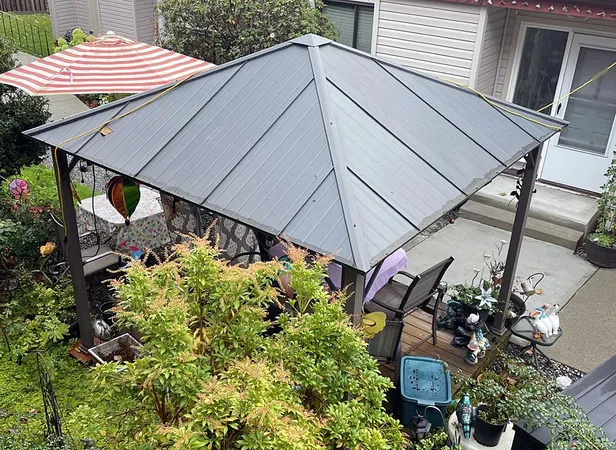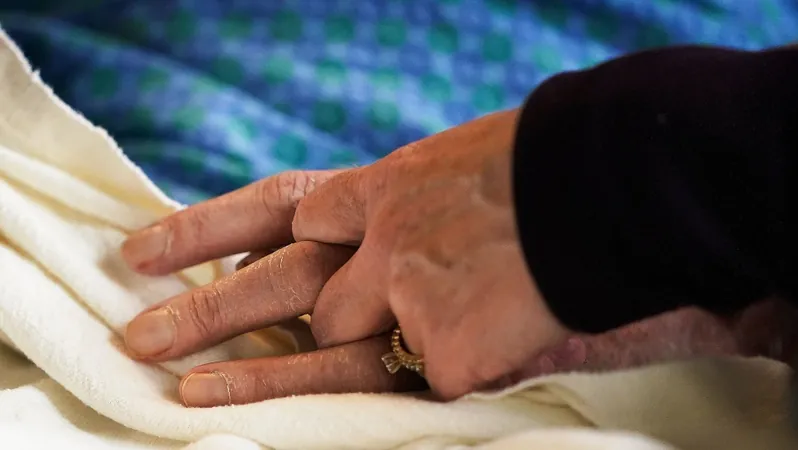
Bitter Strata Battle: Burnaby Townhouse Owner Fights for Gazebo Removal Post-Pandemic
2024-10-05
Introduction
In a recent ruling by the province's Civil Resolution Tribunal, a Burnaby townhouse owner, Darcy Grant Dmetrichuk, has lost his fight against a gazebo erected by his strata during the COVID-19 pandemic. The gazebo, meant for outdoor council meetings, has stirred significant controversy among residents of the Kneale Place complex.
Background of the Dispute
Dmetrichuk claimed that the strata's installation of the gazebo violated established bylaws regarding common property usage. He argued for its removal and requested that the grass be replaced, drawing attention to what he saw as a breach of property rights within the community.
Tribunal's Ruling
The tribunal's ruling clarified the circumstances surrounding the gazebo's construction. Initially, a rubber mat and tent had been set up for meetings in 2020, but as these became damaged, the strata opted for a more permanent solution—a wooden deck topped with a metal gazebo. The materials for this project were reportedly donated by several council members and homeowners, with the goal of providing a communal space for all residents.
Approval Process
Despite Dmetrichuk's objections, the strata contended that the gazebo had been approved retroactively during a February meeting, securing a 3-4 majority vote. This development rendered Dmetrichuk's case moot, according to the tribunal. Tribunal member Amanda Binnie upheld this argument, stating that the strata had adhered to the relevant processes set out by the Strata Property Act when amending common property.
Dmetrichuk's Concerns
Dmetrichuk further alleged that the gazebo was primarily used by council members and raised concerns about potential conflicts of interest due to its proximity to certain members' units. He also expressed skepticism over the notion that the structure was entirely funded through donations, questioning the transparency of financial transactions within the strata.
Critique of the Gazebo's Purpose
Additionally, he criticized the gazebo's dimensions—eight feet by eight feet—arguing it was insufficient for social distancing during the height of the pandemic, yet the tribunal noted that many people used outdoor spaces for gatherings regardless of strict distancing measures, especially in the uncertain early days of COVID-19.
Community Engagement
Interestingly, Binnie highlighted that the tribunal uncovered evidence to counter Dmetrichuk's suspicions, noting that the gazebo had been utilized by other residents for diverse activities, including distributing Halloween candy to local children—a gesture that suggests community engagement beyond mere council meetings.
Conclusion
In the end, the decision reflects not just a legal interpretation of strata rules, but also a broader narrative about community dynamics during challenging times. As communities adapt to changes brought about by the pandemic, disputes like this shed light on the evolving nature of shared spaces in residential living. This ruling raises important questions about homeowners’ rights versus collective benefits within shared properties, and how communities can navigate conflicts that arise from unprecedented circumstances.









 Brasil (PT)
Brasil (PT)
 Canada (EN)
Canada (EN)
 Chile (ES)
Chile (ES)
 España (ES)
España (ES)
 France (FR)
France (FR)
 Hong Kong (EN)
Hong Kong (EN)
 Italia (IT)
Italia (IT)
 日本 (JA)
日本 (JA)
 Magyarország (HU)
Magyarország (HU)
 Norge (NO)
Norge (NO)
 Polska (PL)
Polska (PL)
 Schweiz (DE)
Schweiz (DE)
 Singapore (EN)
Singapore (EN)
 Sverige (SV)
Sverige (SV)
 Suomi (FI)
Suomi (FI)
 Türkiye (TR)
Türkiye (TR)